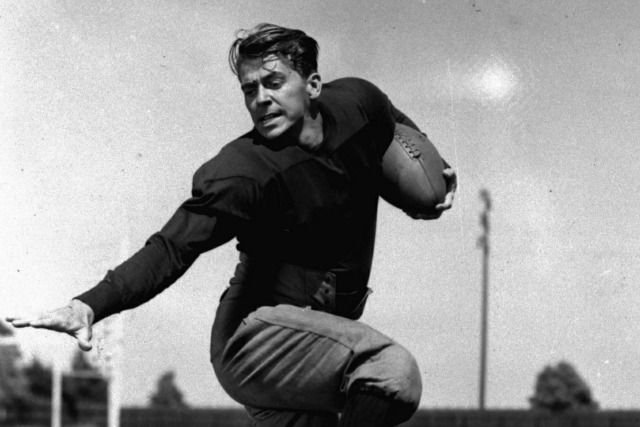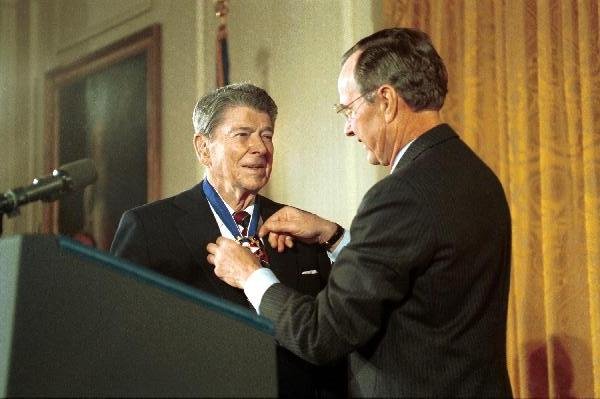From small town Illinois to Hollywood and eventually the White House, Ronald Reagan was a larger than life figure whose stature overshadows conservatives even today, thirteen years after his death.
The Great Communicator is credited for restoring a sense of American pride in the 1980s, and juicing an economy that had been sagging into recession following almost twenty years of social tumult. His message that “government is not the solution to our problem; government is the problem,” was one that resonated with a country eager for a bright new day.
Once elected, it was “Morning in America” again, and the country had a sense that it truly was. While Reagan certainly had a political agenda, he was able to execute on it, but his popularity with average people was very real.
That popularity allowed his administration to enjoy the approval of massive tax cuts, deregulation of business, and a big increase in military spending.
As far as the man behind those ideas, here are five fascinating facts about Ronald Reagan:
‘Win one for the Gipper’

Ronald Reagan, All American, appeared in around 50 films. (Screen grab)
That was Reagan’s famous line in “Knute Rockne All American,” a biographical film of the famous football coach from Notre Dame who put that collegiate program on the map. But Reagan was also an athlete away from the silver screen — he played guard on the Eureka College football team, and also ran track.
His first job out of college was a sportscaster, and it was in 1937 on a trip to Southern California to cover the Cubs’ spring training that he first caught the eye of Hollywood studios.
Even later, as president, Reagan’s sports fandom copped up in different ways. For instance, when he declared May of 1983 National Amateur Baseball month, he said he loved baseball so much “I wouldn’t even complain if a stray ball came through the Oval Office window now and then.”
He flip-flopped from the Democrats to Republicans in ’62
When Reagan served as President of the Screen Actors Guild in the latter part of his Hollywood days, he engaged in many arguments over Communism in the film industry — and that’s when he began to realize he was more conservative, and less liberal.
Living in an area with many famous residents who promoted the ideals of socialism, his conservative convictions would only grow from there. “I didn’t leave the Democratic Party. The party left me,” he would go on to say. Reagan voted for Franklin D. Roosevelt four times, and then Harry Truman, before switching his support to World War II hero Dwight D. Eisenhower.
It wasn’t until a campaign in 1962 when suddenly, “down the center aisle through the audience came a woman who declared I’m a registrar and placed a registration card in front of him. In front of his audience, Ronald Reagan officially joined the Republican Party.”
His high-profile switch helped him into the Golden State’s governorship in 1966.
He survived an assassination attempt as president
On Reagan’s Inauguration Day in Washington on Jan. 20, 1981, he declared: “In this present crisis, government is not the solution to our problems; government is the problem.”
That’s when a madman named John Hinckley Jr. decided that in the coming months, he would make an attempt on Reagan’s life in order to, he said later, to impress a movie star that he was in love with.
She was not enamored, he spent 35 years behind bars and Reagan would go back to work a few weeks later. The bullet fired from Hinckley’s gun pierced Reagan’s lung and narrowly missed his heart.
He had a great sense of humor

Ronald and Nancy Reagan in California, 1964. (Wikimedia Commons)
You don’t become as wholly beloved as Reagan was without having a great sense of humor. Of his assassination, he told wife Nancy “Honey, I forgot to duck.”
On the campaign trail and even in the Oval Office, his signature sense of self-deprecating humor was on display for ordinary people and executives alike to find him relatable. “Recession is when your neighbor loses his job. Depression is when you lose yours. And recovery is when Jimmy Carter loses his,” he once said of his election.
The Great Communicator actually made almost all his own jokes, and his ability to identify the most pressing issue and put a sunny spin on it was became a great attribute of the former actor. Not only was in charge of helping the country out of a recession, but America was still engaged with the Soviets in the Cold War until his disarmament agreement.
“I’ve given my aides instructions that if trouble breaks out in any of the world’s hot spots, they should wake me up immediately — even if I’m in a Cabinet meeting,” he joked.
He nominated the first woman to the Supreme Court

Ronald Reagan receiving the Medal of Freedom from President George H.W. Bush (Wikimedia Commons)
Sandra Day O’Connor became the first woman on the SCOTUS bench after being nominated by Reagan. The Senate voted 99-0 to confirm her appointment, allowing her to make history in 1981 and pave the way for women moving forward to reach higher seats in government.
O’Connor had been a judge on the Court of Appeals in the state of Arizona, where she had previously become the country’s first woman to be named state Senate majority leader in the nation’s history.
At the time of her appointment by Reagan, women accounted for 36 percent of all law school students. By the time she retired in 2006, that number had jumped to 48 percent.
